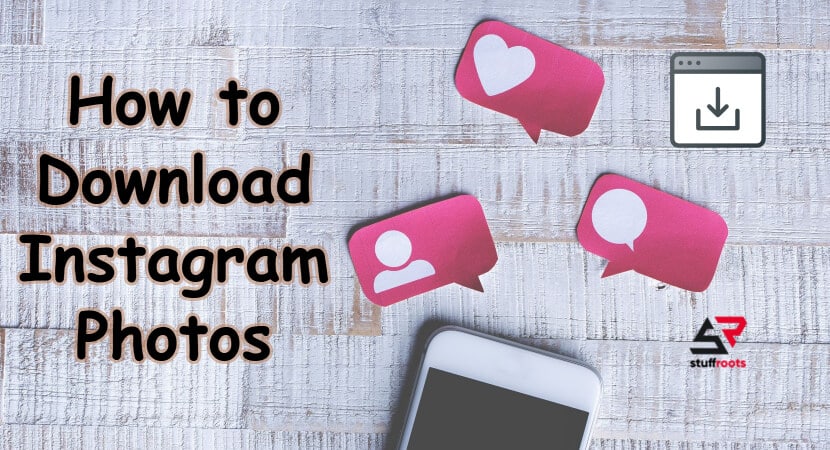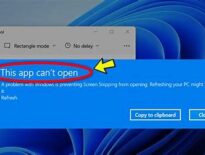Taking a screenshot on an iPad is as easy as pressing two buttons at once on your device—or you can use an alternative onscreen method. While most iPad apps have built-in sharing features, taking a screenshot is still one of the easiest ways to capture information from your iPad. Here’s How to Screenshot on iPad?
Note that while you can capture a screenshot from just about any app on your iPad — even games — screenshots taken in premium streaming apps like Netflix and Disney+ will result in a black image rather than a still frame of the movie or TV show you’re watching. This is not a bug — these apps are specifically designed to prevent you from capturing screenshots for copyright reasons.
What Is a Screenshot?
A screenshot is a direct capture of exactly what’s on your device’s screen. With a screenshot, you can capture what you’re seeing, and then save it for later or share it with others without having to take a photo of your device with a camera.
On an iPad, when you capture a screenshot, it’s saved as an image in your Photos library in the “Screenshots” album (unless you choose to save it to Files after editing, which you’ll see more about below). Once the screenshot is in Photos, you can share it, just like any other image or photo stored on your device.
How to take a screenshot if your iPad doesn’t have a home button?
The process for taking screenshots differs slightly depending on which iPad model you have. Here’s how to take a screenshot if your iPad has an edge-to-edge screen with only a side button and no front home button, such as the iPad Pro (2022), iPad Air (2022), iPad mini (2021), or iPad (2022).
Step 1: How to take a screenshot if your iPad doesn’t have a home button?
Make sure whatever you want to take a screenshot of is shown the way you want on your iPad.
Step 2: How to take a screenshot if your iPad doesn’t have a home button?
Simultaneously press the top button (located on the top-right edge when holding your iPad in portrait orientation), and either one of the volume buttons.
Your iPad screen will flash momentarily, and a thumbnail preview of your screenshot will appear in the bottom-left corner of your screen. You’ll hear a shutter-click sound if your iPad isn’t in silent mode.
Step 3: How to take a screenshot if your iPad doesn’t have a home button?
After a few seconds, the thumbnail preview of the screenshot will disappear, or you can swipe it off the edge of the screen to dismiss it manually. In either case, the image will be automatically saved to your Photos app.
How to take a screenshot if your iPad has a home button?
If you have an older iPad model with a home button on the front, such as the iPad (2021), then the process to take a screenshot will be slightly different — and it can also be a bit trickier since you’ll need to use two hands.
Step 1: How to take a screenshot if your iPad has a home button?
Make sure whatever you want to take a screenshot of is shown the way you want on your iPad.
Step 2: How to take a screenshot if your iPad has a home button?
Simultaneously press the top button (located on the top-right edge when holding your iPad in portrait orientation), and the home button. Unlike the newer iPads, this is a two-handed operation, so make sure you press them at the same time; otherwise, your iPad may simply turn off instead of capturing a screenshot.
Once you’ve successfully captured a screenshot, your iPad screen will flash, and a thumbnail preview of your screenshot will appear in the bottom-left corner of your screen. As with the newer iPads, you’ll also get a camera-like shutter-click sound as confirmation, assuming your iPad isn’t in silent mode.
Step 3: How to take a screenshot if your iPad has a home button?
Wait for the thumbnail of the screenshot to disappear or swipe it off the edge of the screen to dismiss it manually. You’ll be able to find the image saved in your photo library in the Photos app.
How to Take a Screenshot Using Buttons?
Two different types of iPad screenshot button combinations. Most people capture a screenshot on their iPad using a combination of hardware buttons. The buttons that you press are different based on the type of iPad that you have. Here are the combinations:
- iPads without a Home button: Briefly press and hold the Top button and the Volume Up button at the same time.
- iPads with a Home button: Briefly press and hold the Top button and the Home button at the same time.
How to Take a Screenshot without Buttons?
You can also capture screenshots on your iPad without using the hardware buttons using a feature called AssistiveTouch. This comes in handy if you can’t physically perform the button combination, or if one of the buttons is broken or damaged.
To enable AssistiveTouch, open Settings and navigate to Accessibility > Touch > AssistiveTouch. Flip the switch beside “AssistiveTouch” to the on position.
Once AssistiveTouch is enabled, you’ll see a button that looks like a circle inside a rounded rectangle near the edge of your screen. This is the AssistiveTouch button.
You can drag it with your finger to reposition it, but it always stays on your screen as long as AssistiveTouch is enabled. Now that AssistiveTouch is turned on, there are two primary ways that you can trigger a screenshot with it.
The first is by using “Custom Actions” that happen when you tap the AssistiveTouch button. On the Settings > Touch > AssistiveTouch screen, locate the “Custom Actions” section.
Tap “Single-Tap,” “Double-Tap,” or “Long Press” depending on your preference, and then select “Screenshot” from the list of actions that appear. In the action list, select. Then tap “Back.”
To take a screenshot, just perform a single tap, a double tap, or a long press on the AssistiveTouch button (depending on which one you chose). The second method for taking screenshots without buttons is by using the AssistiveTouch menu.
By default, the “Single-Tap” custom action in Settings > Touch > AssistiveTouch is assigned to “Open Menu.” If that’s still the case, you can tap the AssistiveTouch button at any time to see a pop-up menu.
When you see the pop-up menu, select Device > More, and then tap “Screenshot” to take a screenshot. In the AssistiveTouch menu, tap. After that, you’ll capture a screenshot exactly as if you’d pressed the screenshot button combination on your iPad.
What Happens Next?
When you capture a screenshot on your iPad, a thumbnail image of the screenshot will appear in the lower-left corner of the screen. If you do nothing, the thumbnail will disappear automatically, and the screenshot will be saved in your “Screenshots” album in the Photos app. When you take a screenshot on your iPad, you’ll see a thumbnail in the corner of the screen.
If you tap the thumbnail, you’ll enter an edit mode where you can add notes to your screenshot, crop it, and more. When you’re done editing, tap “Done,” and your iPad will ask whether you want to save the screenshot to Photos or Files, or if you’d prefer to delete it. Then repeat as often as you’d like. The only limit to the number of screenshots that you can take is the size of your iPad’s storage.
How to take a screenshot with an Apple Pencil?
If you have an Apple Pencil, you can also use that to take a quick screenshot, which is even harder when you’re already working with your stylus.
Step 1: How to take a screenshot with an Apple Pencil?
Swipe your Apple Pencil from the bottom-left corner of your screen up toward the center. The bottom-left corner is the default setting, with a swipe from the bottom-right used for the Quick Note feature. This can be changed in the iPad Settings app under Apple Pencil > Pencil Gestures.
Step 2: How to take a screenshot with an Apple Pencil?
You’ll see and hear the same flash and shutter-click sound that occurs when taking a screenshot with the buttons. However, when using the Apple Pencil, you’ll be taken directly to the editing and annotation screen.
Step 3: How to take a screenshot with an Apple Pencil?
Perform any edits or markup you want on your screenshot.
Step 4: How to take a screenshot with an Apple Pencil?
When finished, select Done in the top-left corner to save your screenshot. You can also use the Share button in the top-right corner to share your screenshot in the normal way.
How to edit and annotate a screenshot?
Once you’ve successfully captured a screenshot, you’ll see a small preview in the bottom-left corner of your screen. This thumbnail will automatically disappear in a few seconds, or you can swipe it to the left to dismiss it manually.
In this case, the screenshot gets tucked away safely in your photo library, and you can carry on with whatever you were doing before. However, you can also pull up the screenshot to make some quick edits and annotations before that happens. Here’s how.
Step 1: How to edit and annotate a screenshot?
After taking a screenshot, select the thumbnail that appears in the bottom-left corner of your screen.
Step 2: How to edit and annotate a screenshot?
Your screenshot will open in a simplified editing window, ready to be cropped or annotated.
Step 3: How to edit and annotate a screenshot?
For screenshots taken from certain supported apps, such as Safari or Mail, you may also see two extra buttons at the top. In this case, you can choose Screen to save a normal screenshot that includes only what’s shown on your screen or Full Page to capture an entire article, web page, or email.
This can be annotated and cropped in the same way as any other screenshot, but the results will be saved to a PDF file in the Files app rather than your Photos library.
Step 4: How to edit and annotate a screenshot?
To save only a portion of your screenshot, adjust the cropping handles to draw a box around the portion you want to keep. You can also use the standard pinch-to-zoom gesture to enlarge a portion of your screenshot.
Step 5: How to edit and annotate a screenshot?
You can also add markup and other annotations to your screenshot by drawing with your finger or an Apple Pencil. Several annotation tools can be found in the annotations panel on the editing screen, along with Undo and Redo buttons so you can walk back any edits you don’t like.
Step 6: How to edit and annotate a screenshot?
You can also add advanced annotations, such as a text box, magnifier loupe, or your signature, by selecting the Plus button and choosing the appropriate options from the pop-up menu that appears.
Step 7: How to edit and annotate a screenshot?
When you’re finished making edits, select Done in the upper-left corner.
Step 8: How to edit and annotate a screenshot?
Choose Save to Photos or Save to Files to save the resulting image to your photo library or a destination in the Files app, respectively. You can also select Delete Screenshot if you’ve changed your mind and don’t want to save it.
How to share a screenshot?
You can also share a screenshot with any of your contacts directly from the editing screen. This is both a fun way to show your friends and family members what you’re up to, and also handy for quickly sharing information such as directions and maps, articles, and snippets of text.
Step 1: How to share a screenshot?
After taking a screenshot, select the thumbnail that appears in the bottom-left corner of your screen.
Step 2: How to share a screenshot?
Crop and annotate the screenshot if desired.
Step 3: How to share a screenshot?
When you’re ready to send it out, select the Share button in the top-right corner. The standard iPadOS sharing options appear.
Step 4: How to share a screenshot?
Choose an option from the row of icons at the top to quickly share with one of your frequent contacts or an option from the second row to share via a specific app such as Mail or Facebook or send to another device using AirDrop. You can also find the usual sharing options here for saving your screenshot to other apps like Notes.






